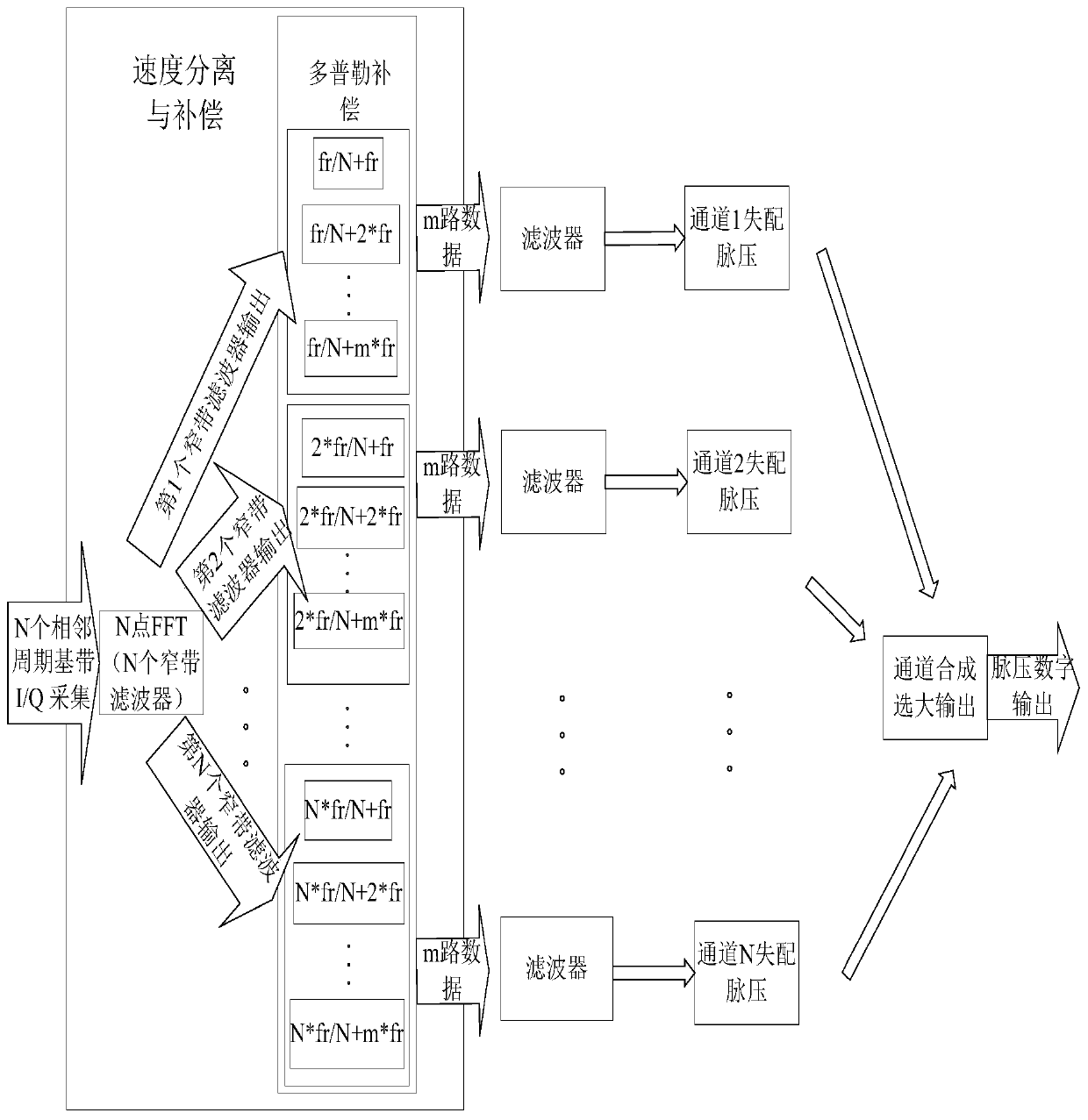Method for improving signal-to-interference ratio of phase coded signal
A phase-encoded signal and signal-to-interference ratio technology, which is applied in the field of signal processing, can solve the problems of low main-sub-ratio, decrease of phase-encoded signal-to-interference ratio, and influence of phase-encoded signal-to-interference ratio, so as to improve signal-to-interference ratio and reduce noise energy effect
- Summary
- Abstract
- Description
- Claims
- Application Information
AI Technical Summary
Problems solved by technology
Method used
Image
Examples
Embodiment Construction
[0013] The principle block diagram of the method for improving the signal-to-interference ratio of the phase-encoded signal of the present invention can be found in figure 1 . The specific implementation steps are as follows:
[0014] Step 1. Speed separation and compensation; 1. Collect and store the baseband I / Q data for N adjacent transmission periods, and perform N-point FFT calculation on the stored data of the same distance unit to form N-way speed-separated data, that is, N Narrow-band filter output; selection of N: use MATLAB tools to perform pulse pressure simulation of superimposed Doppler frequency of phase-encoded signal. When the N value is less than 2dB; 2. For the N channels of data obtained in the previous step, perform Doppler compensation on each channel, the compensation value is n*fr / N+m*fr, and output m*N channels of data.
[0015] Step 2, channel noise reduction; 1. Design a filter with the passband equal to the bandwidth of the phase-encoded signal, ...
PUM
 Login to View More
Login to View More Abstract
Description
Claims
Application Information
 Login to View More
Login to View More - R&D
- Intellectual Property
- Life Sciences
- Materials
- Tech Scout
- Unparalleled Data Quality
- Higher Quality Content
- 60% Fewer Hallucinations
Browse by: Latest US Patents, China's latest patents, Technical Efficacy Thesaurus, Application Domain, Technology Topic, Popular Technical Reports.
© 2025 PatSnap. All rights reserved.Legal|Privacy policy|Modern Slavery Act Transparency Statement|Sitemap|About US| Contact US: help@patsnap.com



